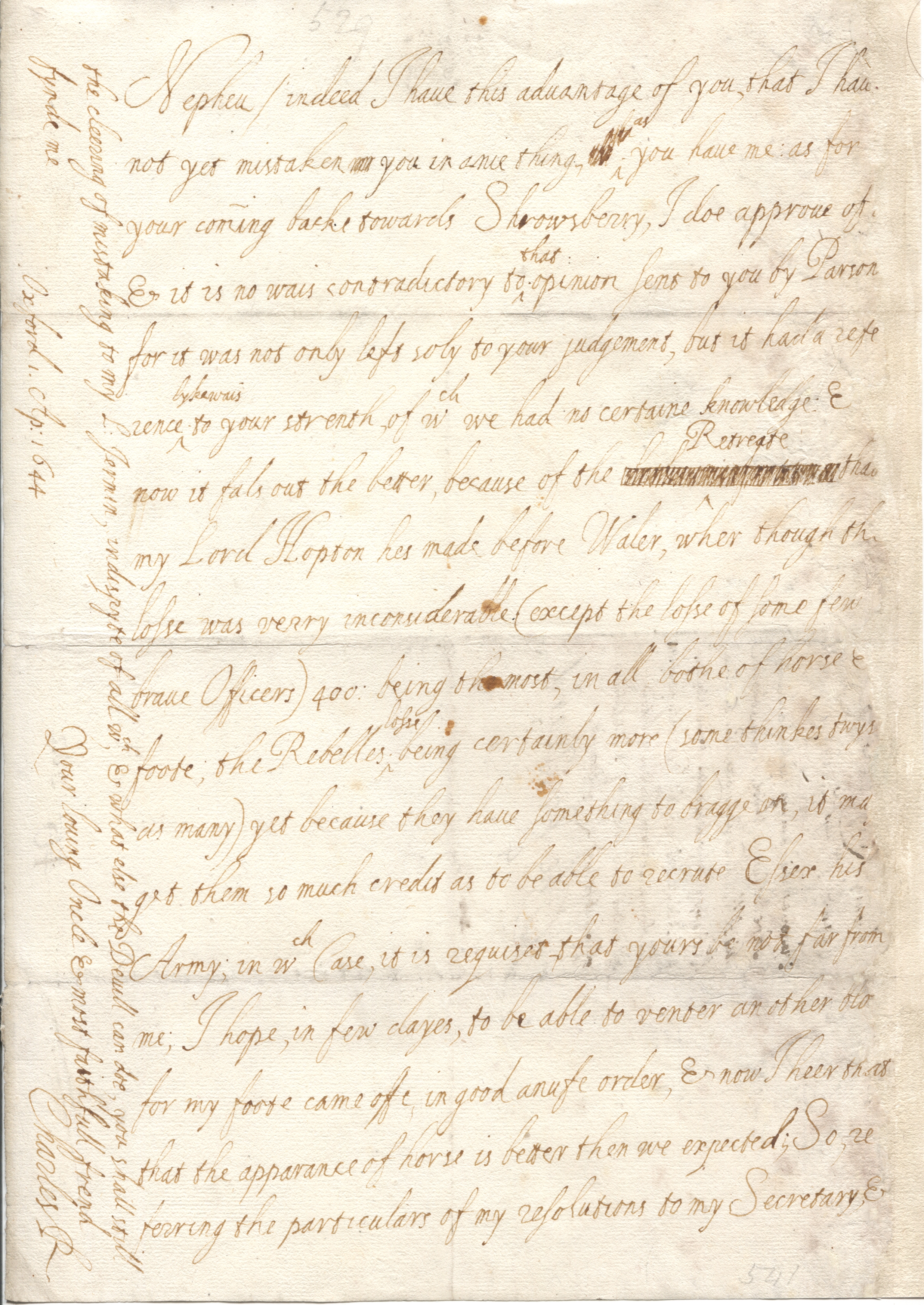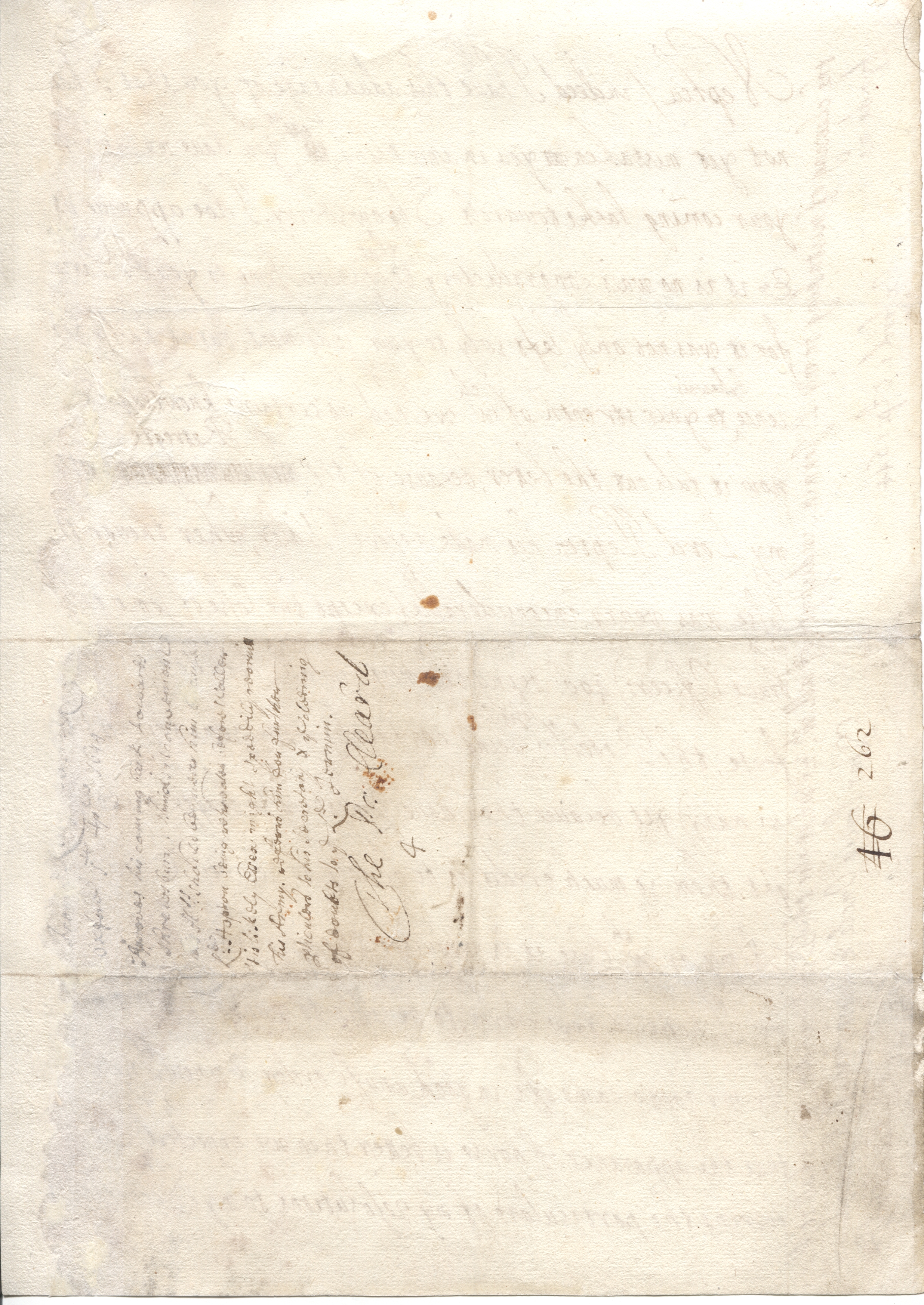
AUTOGRAPH LETTER SIGNED BY KING CHARLES I TO HIS NEPHEW PRINCE RUPERT REFERRING TO THE BATTLE OF CHERITON
CHARLES I
(1600-1649, King of Great Britain)
Important Long Autograph Letter Signed "Your loving Oncle & most faithfull frend Charles R" to Prince RUPERT
(1619-1682, Prince 'Rupert of the Rhine', Cavalry Leader under Charles I, Scientist and founder of Hudson Bay Company, Nephew of Charles I) saying "Nephew, indeed I have this advantage of you that I have not yet mistaken you in aniething, as you have me: as for your coming back towards Shrowsberry, I doe approve of & it is no wais contradictry to that opinion sent to you by Parson for it was not only left soly to your judgement, but it had a reference by Lewis to your strenth of wch we had no certaine knowledge & now it fals out the better, because of the Retreate that my Lord Hopton has made before Wales, wher though the losse was verry inconsiderable (except the loss of some few brave Officers) 400 being the most, in all bothe of horse & foote, the Rebelles losses being certainly more (some thinks twys as many) yet because they have something to bragge on it may get them so much credit as to be able to recrute Essex, his Army, in wch Case, it is requisit that yours be not far from me. I hope, in few dayes, to be able to venter another blo for my foote came offe in good ... order, Er now, I heer that the apparance of horse is better than we expected. So referring the particulars of my resolutions to my Secretary, the cleering of mistaking to my L. Jermin, in dispyte of all wch, & what else the Devill can doe, you shall still fynde me ...", 1 side folio with annotations on the verso, Oxford, April
edges frayed but professionally repaired without loss of text
The Battle of Cheriton of 29th March 1644 was an important Parliamentarian victory during the First English Civil War. Sir William Waller's "Army of the Southern Association" defeated a Royalist force jointly commanded by the Earl of Forth and Sir Ralph Hopton. Defeat ended Royalist hopes of retaking South East England and forced them onto the defensive for the rest of 1644. It is interesting that the King did not realise how disastrous this had been for him. The Battle of Marston Moor would follow on the 2nd July.
The Oxford Parliament, also known as the Mongrel Parliament was the Parliament assembled by Charles I for the first time on 22nd January 1644 and adjourned for the last time on 10th March 1645, with the purpose of being an instrument of the Royalist war campaign. This letter was written just after the dissolution of the Parliament.
Rupert impressed militarily during the war. By 1644, he had been made Duke of Cumberland and Earl of Holderness, he led the relief of Newark and York and its castle. Having marched north, taking Bolton and Liverpool along the way in two bloody assaults, Rupert then intervened in Yorkshire in two highly effective manoeuvres, in the first outwitting the enemy forces at Newark with speed; in the second, striking across country and approaching York from the north. Rupert then commanded much of the royalist army at its defeat at Marston Moor, with much of the blame falling on the poor working relationship between Rupert and the Marquess of Newcastle, and orders from the King that wrongly conveyed a desperate need for a speedy success in the north. In November 1644 Rupert was appointed general of the entire Royalist army, which increased already marked tensions between him and a number of the King's councillors.
Item Date:
1644
Stock No:
41063


<< Back